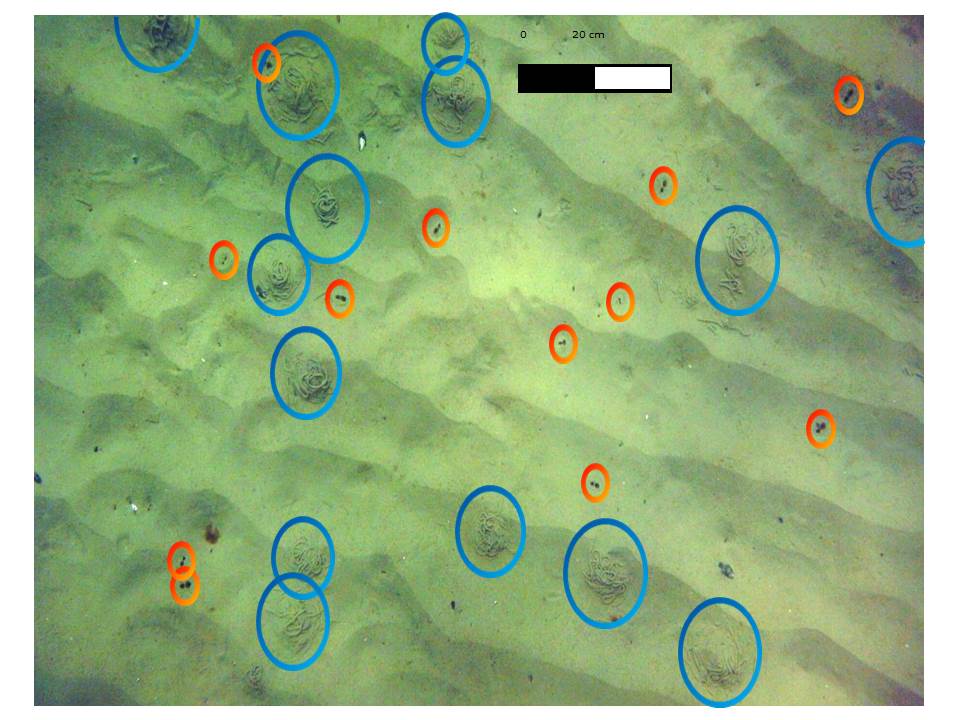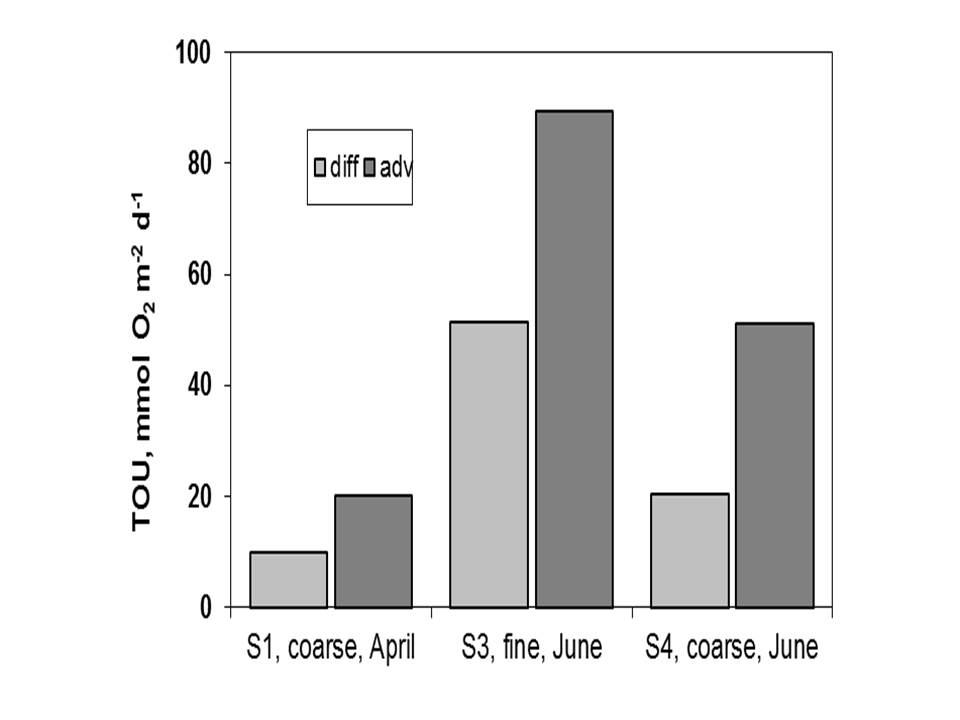B4: Factors controlling transport and matter cycling at the sediment-water-interface
supervised by Forster, Brede, Voss


Focus
We will document the distribution of sediment, peat and glacial clay at the sea floor along with those characteristics relevant for biogenic and hydrodynamic matter exchange. Quantification of oxygen uptake (metabolism) and tracer exchange (fluid transport) will follow. We expect seasonally opposing trends in biological and physical transport effects with a sever fold increase in metabolic activity in summer.
State of the Art
Advective transport at the sediment-water interface (swi) is driven by interactions between waves and currents with both physical (ripples) and biogenic surface topography structures (mounds, tubes, macrophytes). The interactions of these interface processes with SGD is largely unknown. While advection alters the fluxes of matter, sediment macroinfauna is able to affect fluxes between water and sediment largely independent of the prevailing hydrodynamic situation. Fauna may also modulate SGD through changes in permeability, water content and shear resistance of the sediment. Some animals can even bore in glacial tills and make them accessible to fluid exchange. All these are effects have been poorly studied so far. At the study site the seabed will have different such characteristics which need a spatial quantification in order to understand the sea - groundwater exchange in terms of a 'marine landscape', which has not been done so far. Tracer studies and the measurement of total oxygen uptake (TOU) show a pronounced effect of permeability on transport and metabolism in sandy sediments under strong hydrodynamic impact. Understanding the balance between physical advection in a low energy environment, such as the Baltic Sea, and ventilation/bioirrigation by macrofauna in these sediments as well as their effects is still an open question in most regions of the world.
Work program
During the first year, we will aim at mapping the underwater distribution of substrates by GPS-referenced video and other physical remote sensing methods. We will describe and quantify their respective characteristics through sampling and measurements in the lab (macrofauna abundance, surface topography, grain size, permeability, water content, OM content). This work will employ scientific scuba diving and needs training in the use of appropriate software. In cooperation with H4 we will quantify flow characteristics and pressure gradients inside the existing benthic chambers. In year two and thereafter we will conduct TOU measurements and tracer studies in both the lab and the field varying advective pore water flow in chambers.
